Posted by Mark Schieber on 13th Oct 2021
Air Die Grinders - the $50 versus the $500 model, what's the difference? [Guide]
The $50 versus The $500 Air Die Grinder - What's the difference and why such a jump in price?
A pneumatic die grinder is a simple material removal tool designed to turn quick change discs, carbide burrs, or any other number of abrasives. Die grinders are used worldwide to make anything from bed frames to airplane plants and shops that don’t use a die grinder for at least some of their processes are few and far between. A die grinder consists primarily of valving, an air motor, an arbor, and a collet that secures the chosen abrasive in place. Why then, are there so many options on the market and why do the prices of pneumatic die grinders vary so widely?
In this article we break down the real difference between entry level and premium air tools so you can make a choice based on the work you do and not just the price alone. This blog is not designed to persuade anyone to buy a $500 production grade grinder, if a $50 maintenance duty tool will work for you. We want to arm you with the information you need to make an informed decision.
A fitting beginning would be to clarify some of the vocabulary that will be used throughout:
Entry Level Die Grinders
No manufacturer likes to label their die grinders “cheap” so they come up with creative labels for them. Inexpensive die grinders are often dubbed general purpose, vehicle service grade, automotive grade, or maintenance duty. When these tools reach the end of their service life, it's typically less expensive and easier to just buy a new one rather than try and overhaul it. We sometimes refer to these types of die grinders as “disposable”
Popular brands of entry level die grinders include: Central Pneumatic, Campbell Hausfeld, and Astro Pneumatic. The big name air tool manufacturers have their disposable lines as well.
Industrial Grade Die Grinders
On the opposite end of the spectrum are the high end tools that are designed for intensive daily use in a heavy industrial or manufacturing plant type environment. These tools are sometimes labeled as production grade air tools. They are designed to be tuned up after a certain amount of hours and can be torn down and rebuilt many times over. Industrial Grade die grinder brands include: Dotco, Cleco, Chicago Pneumatic, Ingersoll Rand, Desoutter, Top Cat, and Sioux Tools.
Mid Grade Die Grinders
As the name implies, a mid grade grinder is basically a hybrid of those mentioned above. It may not be built to the design specifications of an industrial grade die grinder, but it's componentry will hold up to greater wear and tear than an entry level tool. Ingersoll Rand, Chicago Pneumatic, and Sioux Tools all offer a mid-industrial line of die grinders.

So let's get into it, What Separates a $50 Grinder from a $500 Grinder?

Quality of Componentry and Tolerances of Machined Parts
Inexpensive grinders are built with less than pure metals. The cast parts of disposable grinders are in essence “pot metals” which can vary widely in quality from batch to batch. While inexpensive to produce, the cylinders, rotors, gears and end plates (commonly referred to as the machined components) are soft, making them prone to damage from dirty air, heat, abrasion, and contact with adjacent parts.
Industrial grade die grinders feature components that are precision machined from high quality carbon and alloy steels. After machining, the components are sent to heat treat for hardening. Some manufacturers even go as far as to coat them with special elastomers to further extend the life of the tools.
Sample Illustration of an Ingersoll Rand Industrial Grade Die Grinder:

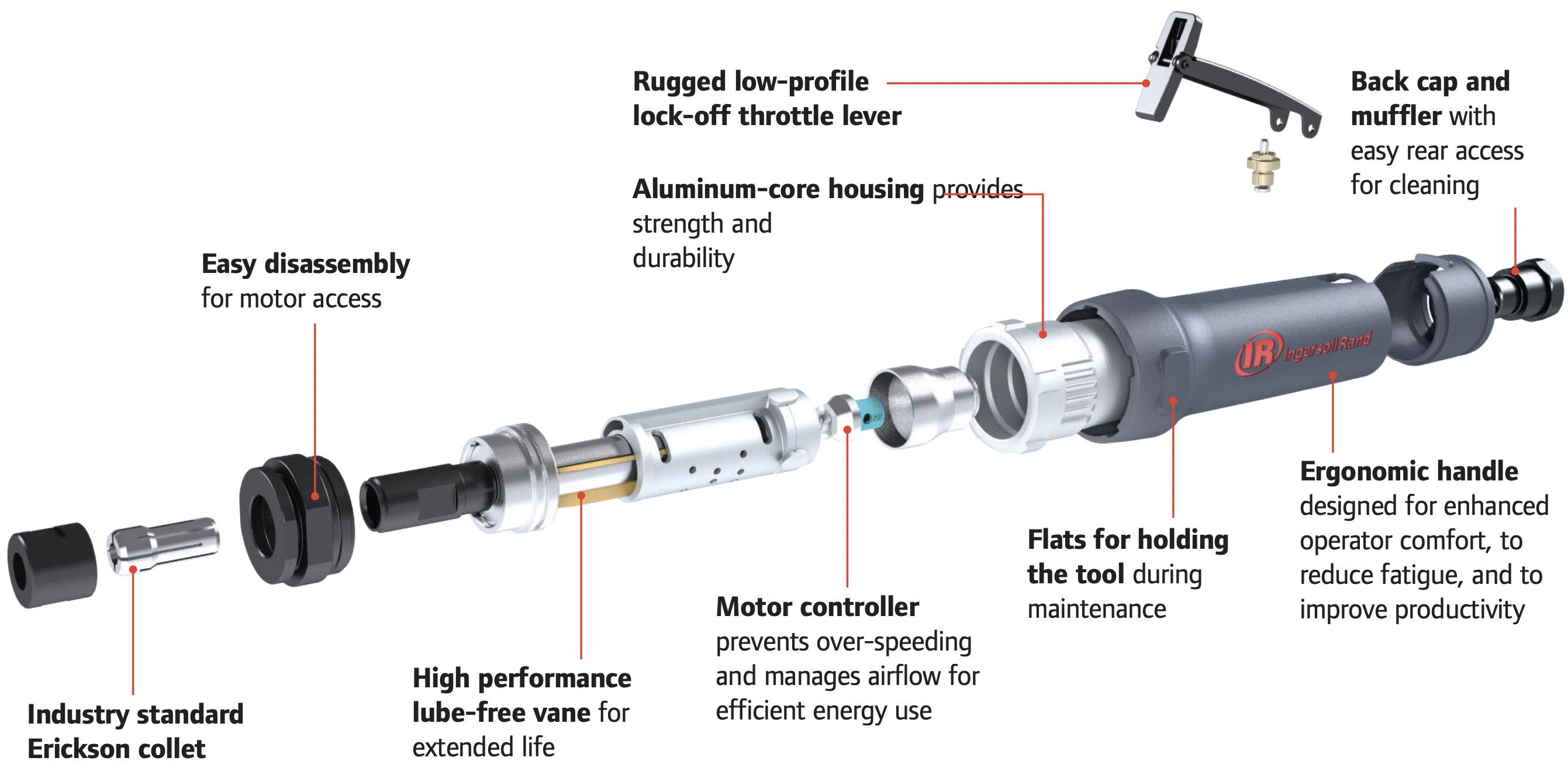

Bearings
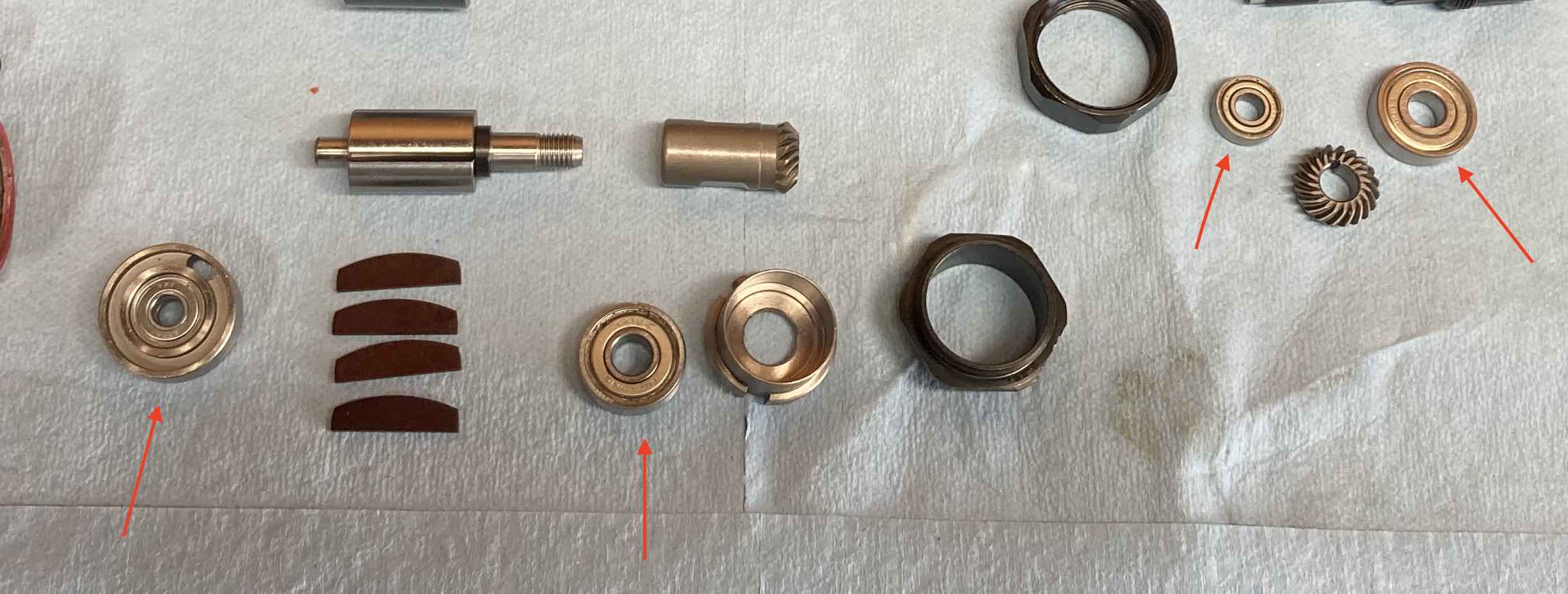
Budget grinders use inexpensive bearings which eventually “run out” and cause the air motor to spin out of alignment. As the bearings wear, the rotors begin to rub against the end plates causing gouges, loss of power, and premature tool failure.
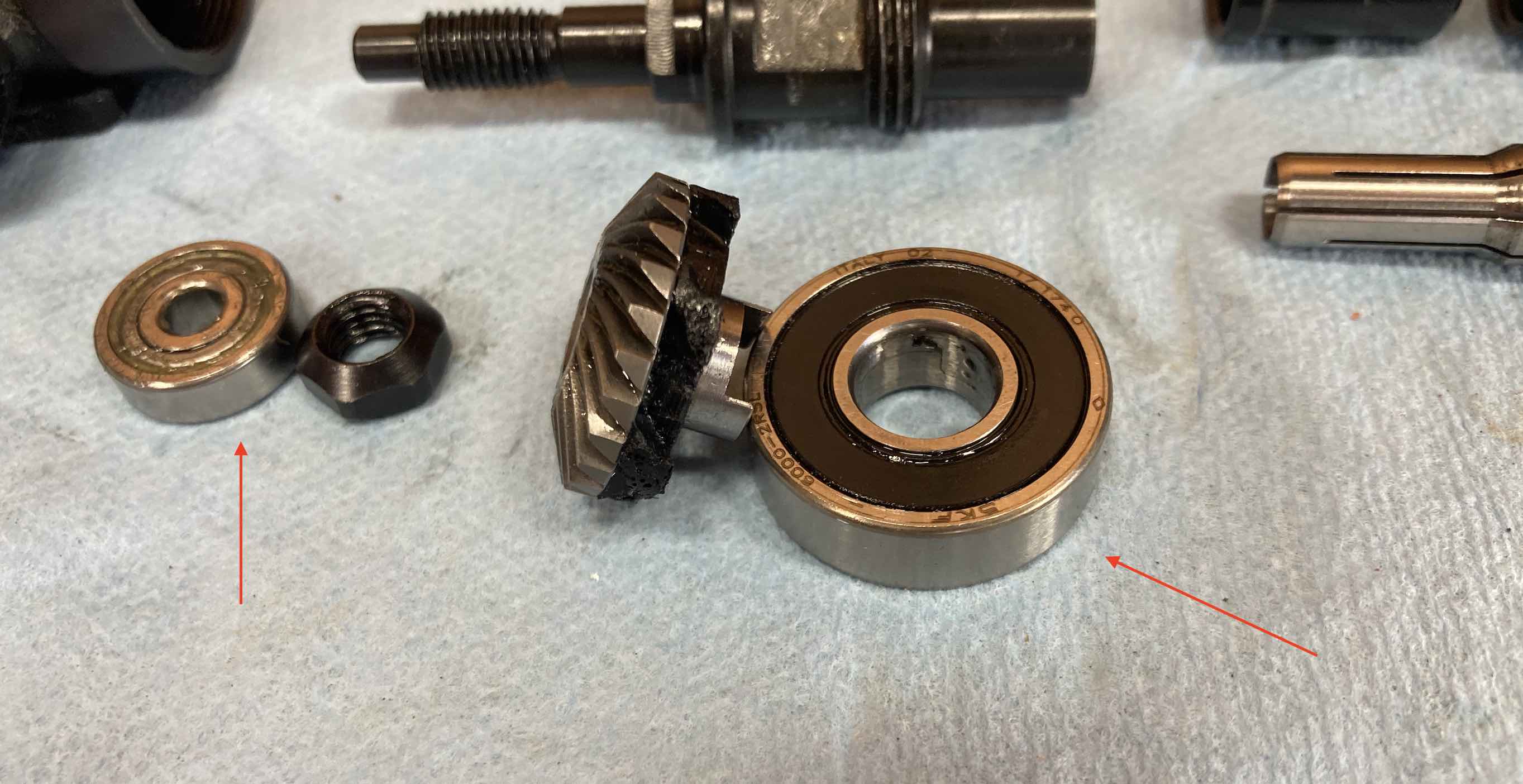
In contrast, an industrial grade grinder uses positive spacing between the rotor and end plates, which eliminates drift and assures greater concentricity. Industrial grade air tools use high quality German or American made bearings which hold up better under the rigors of production grinding. Quality bearings result in a truer spinning motor, and more power to the spindle.
Vanes
Independent of the tools quality level, the motor vanes are the fastest wearing part of any die grinder. Compressed air powers the rotation of the tools rotor which is where the vanes sit. When the rotor spins, the contact between the vanes and cylinder is what generates the tools horsepower. The rapid spinning of the vanes against the cylinder causes a wear point as shown in the image below.

While the manufacturers we interviewed for this article were very tight lipped about the materials they use to manufacture their vanes, they did confirm that industrial grade air tools use wear resistant phenolic composites. The vanes in disposable grinders in comparison, are made of lower quality resins and reinforcing materials. Economy grade vanes generate more heat, wear quicker, and lose power sooner.
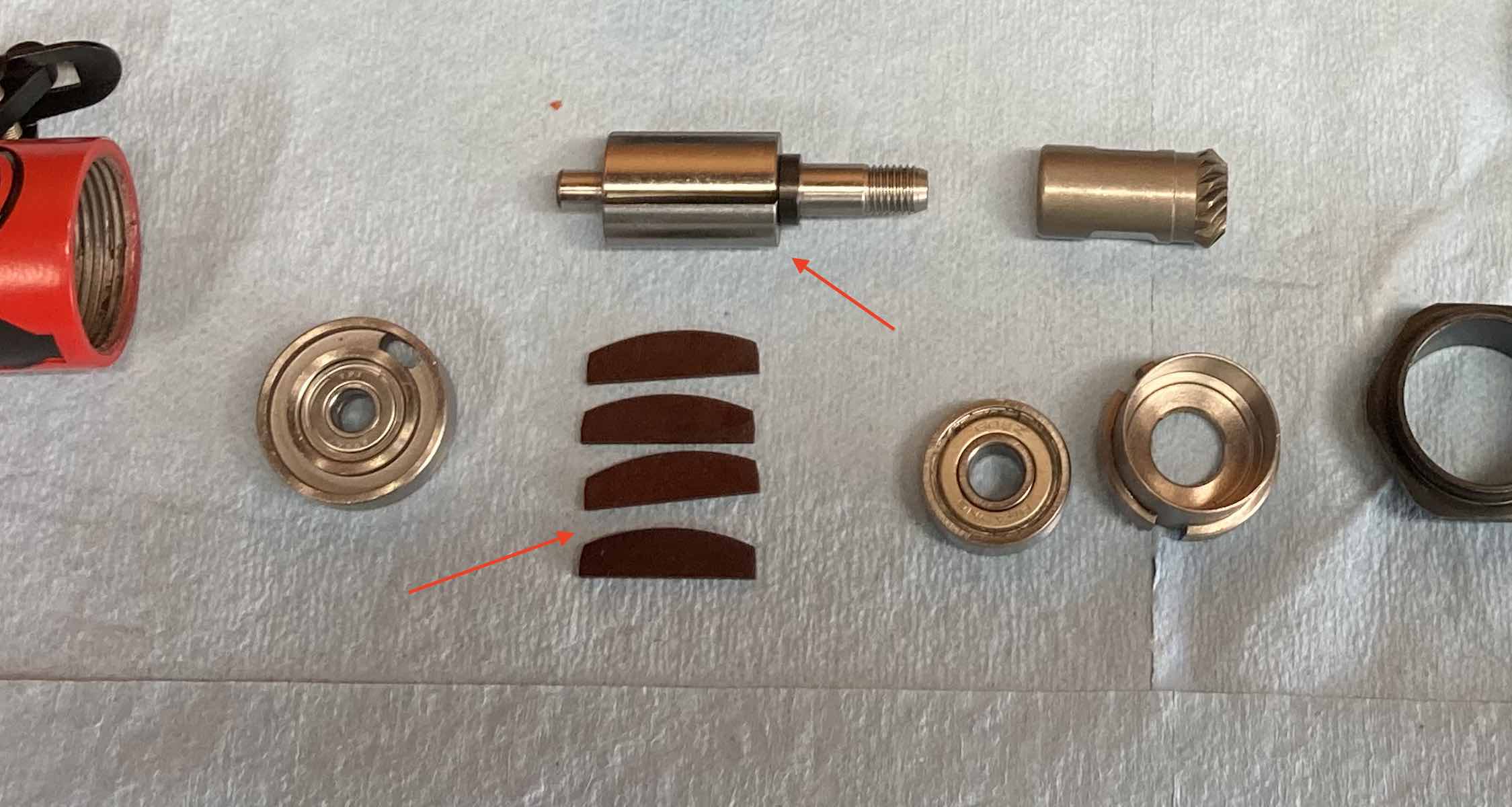
In recent years, industrial grade air tool manufacturers have developed “lube free” motors in which the motor vanes are impregnated with lubricant during manufacture. The lubricant is then released continuously as the vanes wear. While these lube free vanes may offer some protection to users who provide no lubrication to their tools, we found that whether the tool is labeled “lube free” or not, the best way to ensure maximum life from your die grinders is use a Filter-Regulator-Lubricator (FRL) Unit.
Collets
Industrial grade air tools feature heavy-duty, precision-ground, dual-tapered collets which provide secure clamp loads and provide superior run out characteristics.
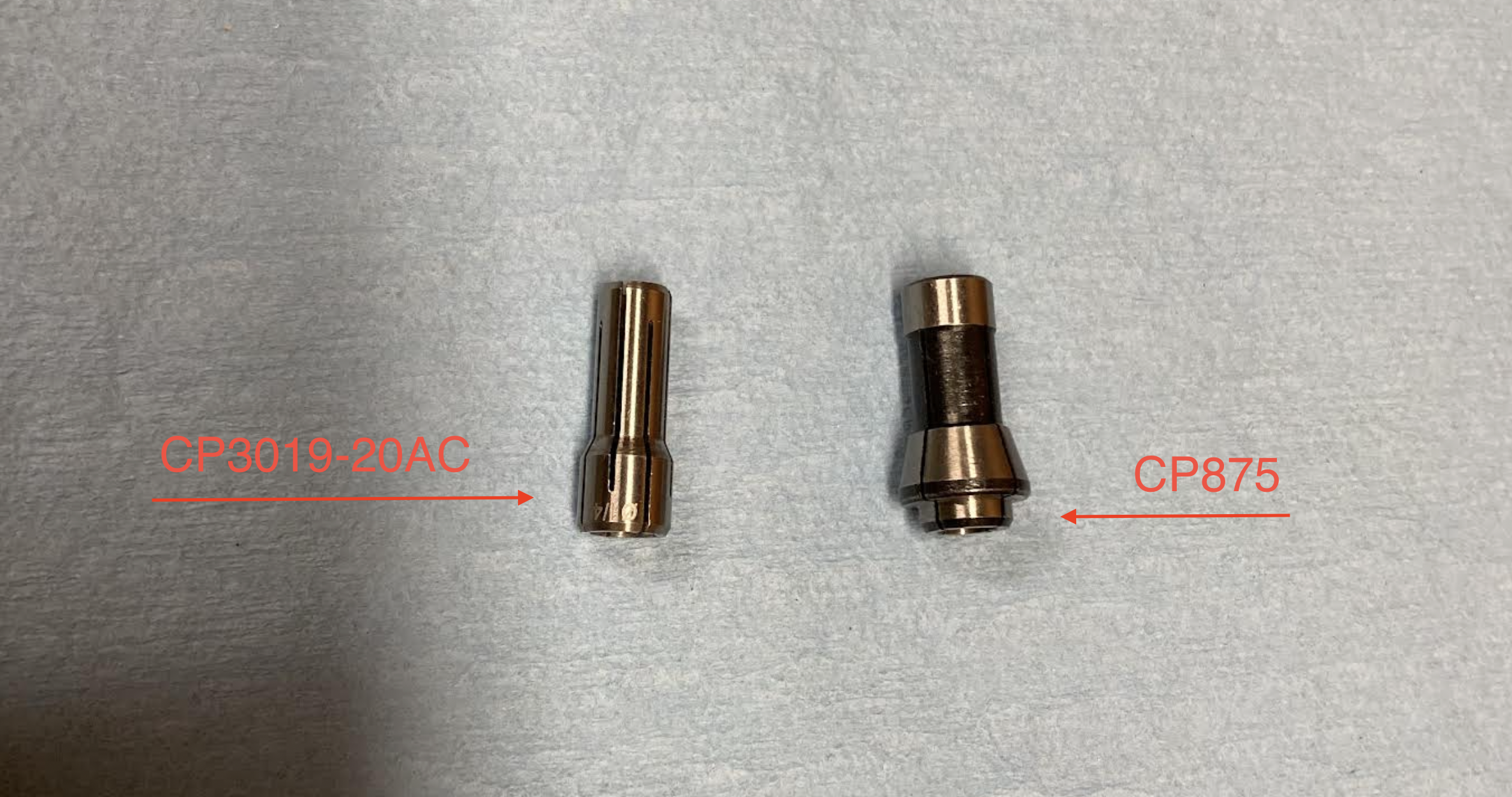
Noise and Vibration
A well made die grinder runs quieter and vibrates less. This means better ergonomics, a safer work environment and higher employee morale. Furthermore, lower vibrations cause less wear on the tool and result in greater life from your abrasives.
Let’s take a look at the illustration below which shows the difference in sound output between Chicago Pneumatic’s popular CP875 (20,000 RPM, 0.3 HP) disposable die grinder and it’s industrial counterpart the CP3019-20AC (20,000 RPM, 0.5 RPM)
Using ISO Noise Standards as a reference, the comparison reveals that the industrial grade model runs 19% quieter:




Design Factor and Serviceability
Simply put, cheap die grinders are just not that easy to take apart. While it's certainly possible to rebuild them, after any significant time in use, their soft housings begin to deform. Furthermore, since the bearings are press fit, you will most likely need a small bench style press to get the motor apart.
In contrast, many industrial grade die grinders are modular in design. Take for example the Sioux Tools Signature Series line, which features a drop in air motor that requires no shims and no alignment. The motor can quickly be removed from the housing and swapped out for a fresh one. Production shops sometimes keep completely rebuilt air motors on the shelf in their tool cribs, so that a grinder in need of service can be back on the floor in a matter of minutes, not days.
Repair Part and Labor Costs
The cost of parts required to repair disposable grinders will often meet or exceed the price of a new tool. More importantly, since cheap grinders tend to be small and delicate, it's going to take more of your valuable time to get them apart, rebuilt, and reassembled.
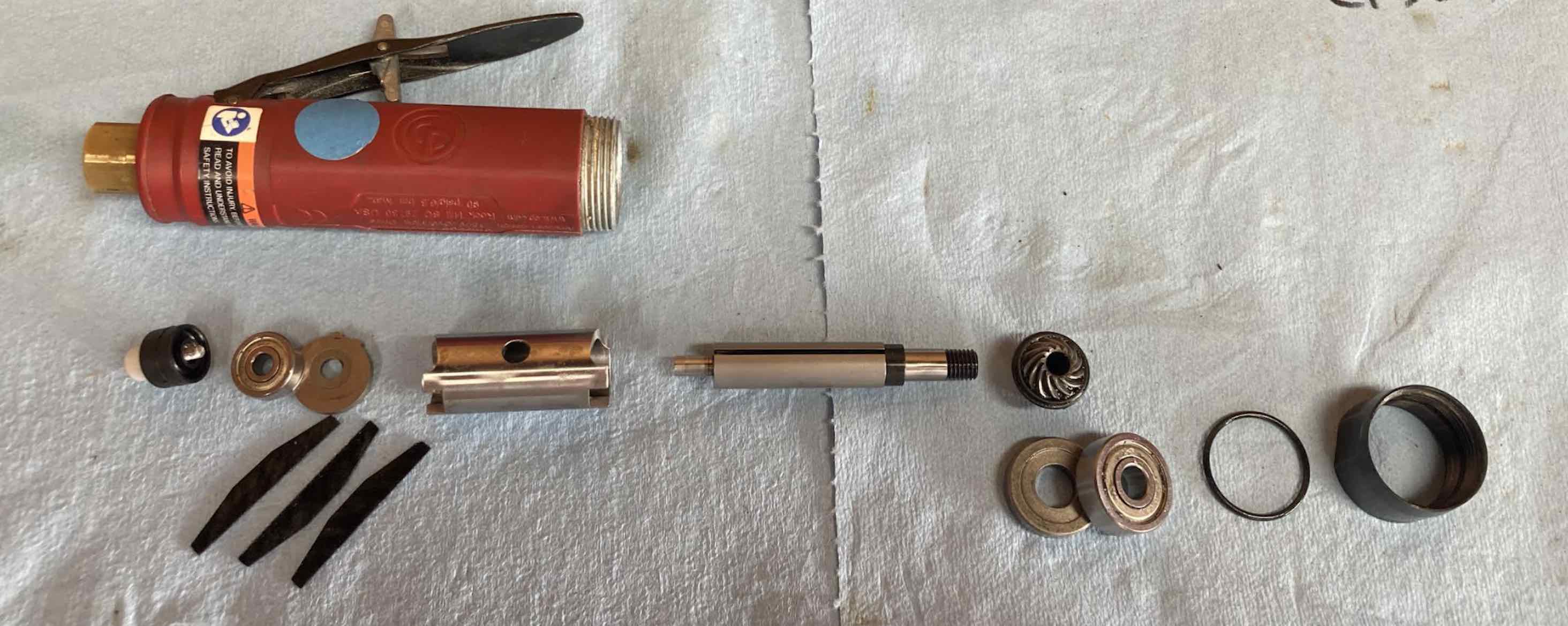
Service Intervals
While not all manufacturers are willing to list the recommended hours between service intervals, Chicago Pneumatic does. According to their website, their mid-grade die grinders will run for 1,000 working hours without a tune up, while their industrial grade die grinders will go 2,000 hours. Under demanding working conditions, it is unlikely that a disposable grinder will last that long. Furthermore, when an industrial grade tool does go down, provided it just needs a tune up kit and not machined parts, you can usually rebuild them for less than half the price of a new one.
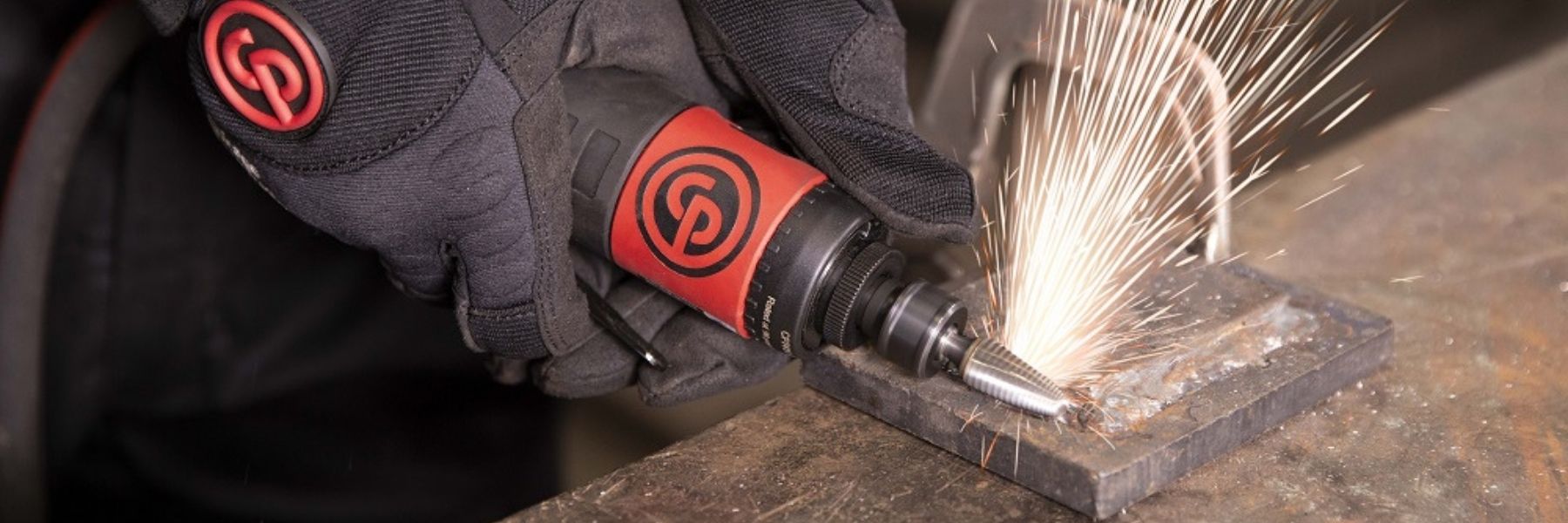
Country of origin
100% of disposable grinders are imports, while many industrial grade die grinders are still manufactured in the USA. It should be noted that with the proliferation of globalization and aggressive price competition, even the most long-standing air tool manufacturers are sourcing components from abroad and performing final assembly in the USA. Nonetheless, if you are looking for the die grinders containing the most American made parts, and built with the most American labor, your choice should be Top Cat Air Tools out of Ohio.(T.C. Service Company)

Waste
Even a mid size fab shop with 50 or so welders will burn through a half dozen disposable grinders per month. A quick glance through their tool room will usually reveal a “die grinder cemetery” containing several buckets of defeated die grinders which eventually end up in the landfill.


Conclusion: Who needs an industrial grinder and who can get by with an entry level model?
So this article takes a few shots at “throw away” grinders, but in some cases they are in fact the right tool for the job. Here is when to opt for an inexpensive die grinder:
#1 - The tool will only receive occasional use
Cheap die grinders are labeled general purpose or maintenance grade for a reason, they are designed to be used for fixing things or for one off jobs. If your intended usage includes taking down the occasional weld or parting off a tube or two, then a throw away tool is a perfectly acceptable choice. Feed it clean air and lube it before and after use, and these handy little tools will serve you for years to come.
#2 - You are a Do It Yourselfer (DIY)
Unless you are doing some serious garage welding, an inexpensive die grinder will do the trick for most at home projects. You just need to make sure your compressor puts out enough air flow to keep up, because even an inexpensive die grinder can consume 24 CFM or more. A properly cared for entry level die grinder can provide years of service when used for: light grinding, rust removal, polishing, cutting off small diameter stock, woodworking, or automotive applications. Nonetheless, even the aforementioned applications will quickly overcome a Harbor Freight Special, so invest a little more for a brand die grinder if you are a die hard DIY. We have had great luck with the Ingersoll Rand 301B in general purpose applications.
#3 - If you provide your workers with high end tools, they will grow legs and disappear
There are bad apples in any bunch and unfortunately the industries we serve are no exception. Because we are based in San Diego, many of our customers are sub contractors to our local shipyards and Navy. Much of the work they perform takes place on piers which at any given time may be shared with a dozen or more other contractors. Unattended die grinders have a tendency to disappear, sometimes unintentionally, sometimes intentionally. A Strategy employed by some of our clients is to paint their die grinders specific colors (pink is a nice deterrent). Nonetheless, at the end of the day policing industrial grade air tools just becomes too much for some companies and out of frustration they opt for the cheapos.
Conclusion:
The bottom line is that if your die grinder will be used as an integral part of your production process, you need to invest the money in quality tools. A preventive maintenance program should also be established and common wear parts kept on hand.
In contrast, if you just need a tool for shop, around the house, or occasional maintenance use, an entry level or mid grade die grinder will serve you well.
If you have doubts about which air powered die grinder will best meet your needs, that’s what we are here for.
Give us a call at (619) 795-7955 or shoot us an email at info@intlairtool.com - We are always happy to talk shop.


![Air Die Grinders - the $50 versus the $500 model, what's the difference? [Guide] Air Die Grinders - the $50 versus the $500 model, what's the difference? [Guide]](https://cdn11.bigcommerce.com/s-13fb4/images/stencil/485x480/uploaded_images/die-grinders-blog-thumbnail.jpg?t=1633537367)
